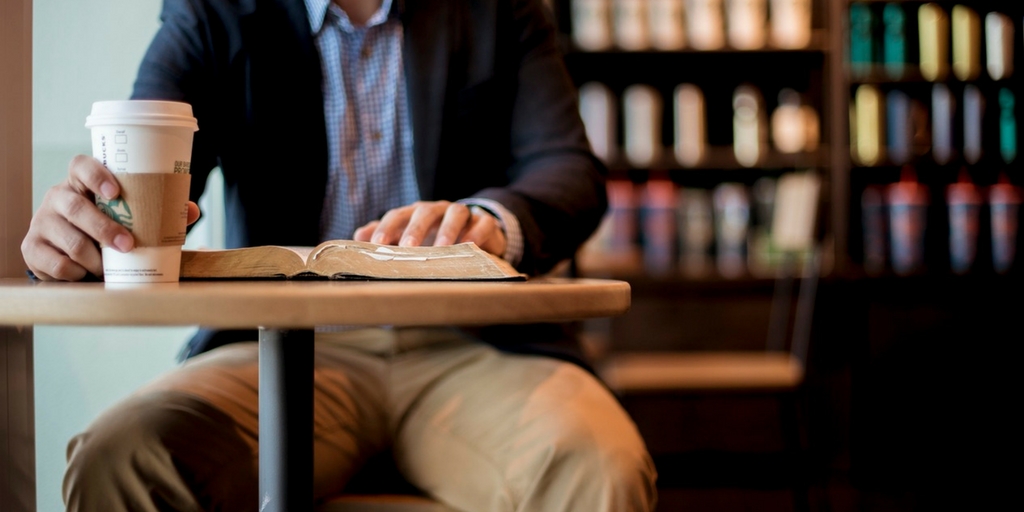
by Fronetics | May 3, 2017 | Blog, Content Marketing, Logistics, Marketing, Social Media, Supply Chain
There’s never been a better time for supply chain and logistics businesses to implement a content marketing strategy — except for maybe yesterday.
Content marketing is a form of inbound marketing in which vendors publish digital content to attract customers who are searching for products and services like theirs. If done right, it is highly effective in growing brand awareness, generating and converting leads, and driving sales and repeat business.
Think content marketing isn’t for supply chain and logistics businesses? Guess again. Here are five reasons why companies in these industries should use content marketing.
5 reasons to use content marketing
1. Buyers use content to make purchasing decisions.
The B2B buying landscape has shifted dramatically in the last 10 years. Buyers no longer rely on sales reps to make purchasing decisions; they turn to the internet. Companies must shift to accommodate buyers at various levels of self-sufficiency in the purchasing process.
The reality is that 94% of B2B buyers use online research. That means they’re judging whether or not to buy from your business based on the kind of digital content you publish (or do not publish, as the case may be). Consider these stats:
- 95% of B2B buyers are willing to consider vendor-related content as trustworthy.
- 51% more B2B buyers rely on content to make purchasing decisions than they did last year.
- 47% of B2B buyers consume 3 to 5 pieces of content before engaging with a sales person.
2. Control the conversation in your favor.
Customers go online to discuss their buying experiences — both positive and negative. If a potential buyer googles your business’ name, what will they find?
Content marketing puts you in the driver’s seat of reputation control. If you publish thought-provoking blog posts about industry trends, you can earn a reputation as a thought leader in the space. If you curate the latest articles about relevant happenings, people will begin to view your social media accounts as a resource for industry news. Be professional, quirky, clever, ahead of your time, youthful, wise, funny, off-color — whatever your brand is, you can set that reputation by what you publish online.
3. Present yourself as a solution.
When prospects go online they are looking for information and for answers. Position yourself as an expert who fully understands their problems and how to solve them by publishing content that anticipates their pain points. Quickly and fully respond to customer queries on social media. Use content marketing as an opportunity to be the solution prospects are looking for, right when they need it most.
4. Content marketing is more effective than traditional marketing.
Companies in the supply chain and logistics space have a lot to gain by modernizing their marketing tactics. We see this every day with our clients. With the evolving B2B buying landscape, ads in industry publications no longer cut it as a “marketing strategy.”
Take two examples under consideration. How about TotalTrax, a warehousing technology company that grew new business by 30% with content marketing? Or 3PL Cerasis, who gained 98 customers from its content marketing efforts? Content marketing works, and that’s been proven time and again with logistics and supply chain businesses.
5. Your competitors are doing it.
Content marketing is already a widespread practice within the supply chain and logistics industries. If you’re not producing content to attract prospects and retain customers, you’re missing out.
This year, 75% of marketers are increasing their investments in content marketing. Why? Because it works. Successful content marketers experience drastically more site growth than their competitors. In fact, content marketing leaders experience 7.8 times more site traffic than their competitors.
In sum, content = customers. If you’re not using content marketing as part of your marketing program, you’re going to get left behind, if you’re not already.
Related posts:


by Fronetics | Mar 14, 2017 | Blog, Content Marketing, Marketing, Social Media, Strategy
Keep these best practices in mind when determining how often to post to social media.
Creating valuable, relevant content in a strategic and consistent manner creates demand for your products and services and drives profitable customer action. But as BuzzFeed’s Jonathan Perelman said, “Content is king, but distribution is queen and she wears the pants.”
It’s not enough to just create interesting and pertinent content; you have to put it out there to reach your target audience. Moreover, the content needs to be delivered consistently over time, at the right time, and in the right place.
With social media networks changing daily, it’s hard to keep up with where to distribute content, much less how often. Countless studies have attempted to solve the social-media-frequency equation. And while audiences vary across industries, best practices give us some general guidelines.
Here’s our assessment of social media posting frequency.
Twitter: 40 per day*
*Big caveat here: 40 tweets per day is what we’ve found works for us and most of our clients. Let me explain.
Socialbakers suggests that posting to Twitter three times per day is the ideal frequency for brands. Buffer posts to Twitter 14 times per day. Fronetics happens to tweet 40 times per day. So last spring, after seeing the Socialbakers and Buffer stats, we conducted a month-long experiment to see how dropping our posting frequency closer to their benchmarks would affect our engagement.
As we’ve written about before, it wasn’t pretty. We confirmed that our engagement, web traffic, lead generation, and other key performance indicators are at optimal levels when we tweet 40 times per day.
Your company, or your marketing partner, should conduct due diligence and determine what the right frequency is for your business. Yes, you may realize a significant decline in engagement in ROI during your experiment. On the other hand, you may realize an increase in engagement and ROI — captured with lower output in terms of time and resources.
Facebook: 1 per day
Most companies find that posting 1 time per day is their sweet spot for most social media networks. Facebook is no exception: The network’s algorithm values quality over quantity, so the more engaged your followers are with your content, the more likely they are to see your posts. This also means that posting content that does not facilitate engagement can actually decrease the likelihood that followers will see your posts.
One sure way to encourage disengagement is by overwhelming your audience. We all have that friend or company we follow that posts too much — don’t be like that person.
Remember that the lifespan of a Facebook post (about 5 hours) is significantly longer than that of a tweet. So you don’t need to provide a constant stream of content to get your audience’s attention. Your focus should be distributing the most relevant, interesting content you can, at a time when most of your audience will be on Facebook.
Instagram: 1-2 per day
There’s an unwritten rule among Instagramers that a user shouldn’t post more than once per day. We generally agree for the same reason we don’t think brands should post more than once a day to Facebook: Don’t overwhelm your audience because the lifespan of your posts is pretty long. In fact, a Union Metrics study found that many Instagram posts continue to receive engagement for days — even weeks — after posting.
Most brands end up posting 11-20 posts per month. If you focus on compelling images with strategic messages, that’s probably a good benchmark to stick with. It’s important to note, however, that another Union Metrics study suggests posting consistency is more important than frequency. Again, taking the time to test the Instagram posting frequency that works best for your business is a worthwhile endeavor.
LinkedIn: 1 per day
A more formal and technical social media network, consider LinkedIn a platform for business-related content. Don’t post here more than once per day — and consider posting only during the workweek. Many professionals don’t check LinkedIn on the weekends, and your content could easily be missed.
Buffer reports that posting 20 times per month (once a workday) allows companies to reach 60% of their audience. To provide the most value for your LinkedIn followers, content should be less promotional and more heavily focused on industry-wide trends and insights.
At the end of the day, optimal posting frequency for your company rests heavily on the audience you want to reach. Experimenting with different social media networks and posting frequencies will give you greater insight into your ideal distribution approach. With these best practices as a guide, let your own analysis be your guide. Maintaining a dynamic and fluid posting strategy will ensure that your social efforts drive followers to action, rather than drive them away.
Related posts:

by Fronetics | Feb 22, 2017 | Blog, Content Marketing, Marketing, Strategy
Follow these 4 steps to learn how to build a successful DIY content marketing strategy that will help grow your business.
Are you trying to create a content marketing strategy, but don’t know where to begin? Even the language around content marketing can seem foreign to newcomers. That’s why Fronetics created its guide, How to Grow Your Business with Content (download below) — to make creating a content marketing strategy possible for the DIYer in your company.
Setting your content marketing strategy is a crucial first step in trying to reach your target audience. Before you begin writing blogs and posting tweets, you need to set goals. A content marketing strategy outlines the methods by which you will target, reach, and engage your audience. Here are four steps, outlined in the guide, to creating a successful foundation to your content marketing strategy.
Steps to building a content marketing strategy
1. Identify your target audience and buyer persona(s)
Knowing who your ideal customer is allows you to create content that is informative, educational, and entertaining to that specific person. Trying to write compelling content for an unidentified audience is like taking a shot in the dark. The more detailed you can be with your buyer persona(s), the more specific and effective your content can become.
2. Define goals and objectives
Your content goals should be a direct reflection of your business goals. What do you want your content marketing efforts to accomplish for your company? The top marketing goals for content marketers in 2016 included converting contacts/leads to customers, growing website traffic, and increasing revenue derived from existing customers. Make sure you include short-term and long-term goals and that you frequently refer back to these goals to make sure your strategy is on track.
3. Developing and distributing content
Once you have identified your audience and defined your content goals, you can begin to educate yourself about the distribution platforms that will work best for your business. Let’s face it: Social media is not a one-size-fits-all solution. It’s imperative you know not only what to post but where to post it.
There are lots of great resources to help you optimize your content marketing presence. You can individualize your outreach so your blog posts are reaching one target audience, while your tweets are capturing another.
4. Put your knowledge to work
Once you have worked through the initial steps of planning a successful content marketing strategy, the real fun begins. It’s time to start pushing valuable, effective content out to consumers. If you’ve spent the time and effort up front to really thing through your strategy, you’ll reap the rewards in good time. Just remember that your strategy should be fluid, and you should be able to adjust your plans as you move forward and find what is working and what isn’t.
Pulling together a content marketing strategy for your B2B business can seem overwhelming. But having the right tools to support you can make all the difference. Download Fronetics’ easy-to-follow, step-by-step guide How to Grow Your Business with Content below to take the leap to a successful DIY content marketing strategy today.

Related posts:

by Fronetics | Feb 20, 2017 | Blog, Content Marketing, Marketing, Supply Chain
A recent survey of over 400 business blogs shows what the best bloggers have in common and what supply chain marketers can do to improve their blogs.
Maintaining a blog for your business can be somewhat of a guessing game. How often should you publish? Should you do all the writing in-house? Will anyone read our posts?
A recent survey of 428 marketers conducted by Curata sought to identify any patterns or trends among those with the most successful business blogs. Specifically, the authors grouped together those whose blogs had more than 10,000 views per month and compared them to those with less than 10,000 views per month.
The most successful blogs (those with over 10,000 views per month) have several things in common. The following infographic shows some highlights from the survey.

(Made with Canva)
Read the full report from Curata’s survey here to get more insight into the best business blogs. For more information and tips on blogging for your supply chain business, check out our related posts below.
Related posts:

by Fronetics | Feb 15, 2017 | Blog, Content Marketing, Marketing, Strategy
Ask yourself these six questions to see if you could be attracting more leads by writing better content.
All too often, marketers fall into the trap of sacrificing quality for quantity in their content writing efforts. It’s an easy mistake to make — the pressure to produce a constant stream of content can naturally lead to a drop in quality. But if you’re not writing high-quality, substantive content, you’re wasting time and energy.
If you’re wondering whether your content might not measure up, ask yourself these six questions.
Do you need better content?
1) Is my content search-engine optimized?
Since over three-quarters of today’s buyers use Google to research products, a key to making sure your content is showing up in search results is search engine optimization (SEO). This means writing copy that will be prioritized by Google in web queries related to your business or products. For ideas on SEO optimization, check out these 3 Quick SEO Tips to Improve Your Blog Right Now.
2) Am I using the right channels to reach my target audience?
In order to answer this question, you first need to have a clearly defined idea of your target audience. Once you know who you’re trying to reach, evaluate where they’re active. Analytic programs like Google Analytics and sites like Tweriod can provide valuable insights on your followers’ social media habits.
3) Am I publishing content, or a sales pitch?
Remember that content marketing is about offering valuable, expert information to your audience — it’s not an overt sales pitch. Present your readers with this kind of expertise, rather than a repeated sales pitch, and you attract loyal customers, and associate your brand with quality and value. Anything you post should be geared to meet specific needs of your customer, rather than to bludgeon them with information about your products or services.
4) Am I providing a good quality user experience?
Pay attention to format, length, accessibility, and voice. Is your business’ website visually appealing and easy to navigate? People will read your content only if it’s visually accessible and engaging.
5) Have I paid attention to performance analytics?
Be aware that what worked last year may not work this year — pay attention to performance analytics to monitor what kind of content is successful and what is no longer generating and converting leads.
6) Is my content good?
This might seem like the most obvious question of all, but it’s important to ask it every time you post. Of course, determining what constitutes good and bad content is the key here. Are you producing writing that is original, substantial, and well written? A good tool to get you started is Fronetics’ On Writing Good Content: A Guide for the Logistics and Supply Chain Industries.
Remember, your content is a reflection of your company. When potential buyers come across your blog posts or other content online, that’s how they get to know you. If it’s poorly written with mistakes and blurry images, well — you look pretty sloppy.
Quality, substantive content shows that you are an authority in your field. It will let potential buyers know that you know what you’re talking about, that you run a polished business, and that they can trust you. So while quantity is important when it comes to content, quality should never be compromised.
Related posts:










